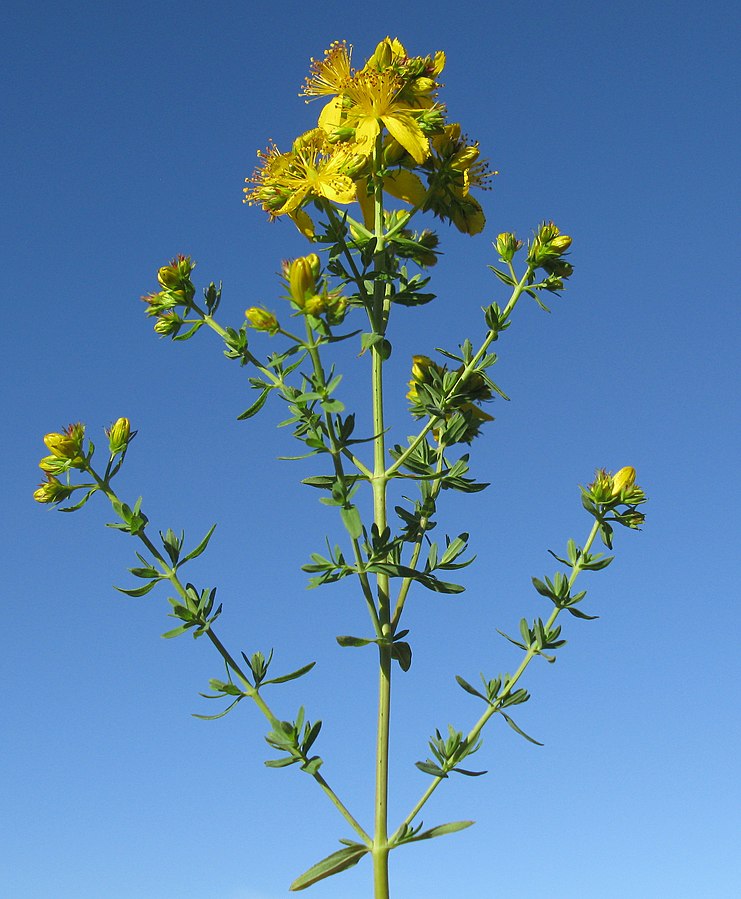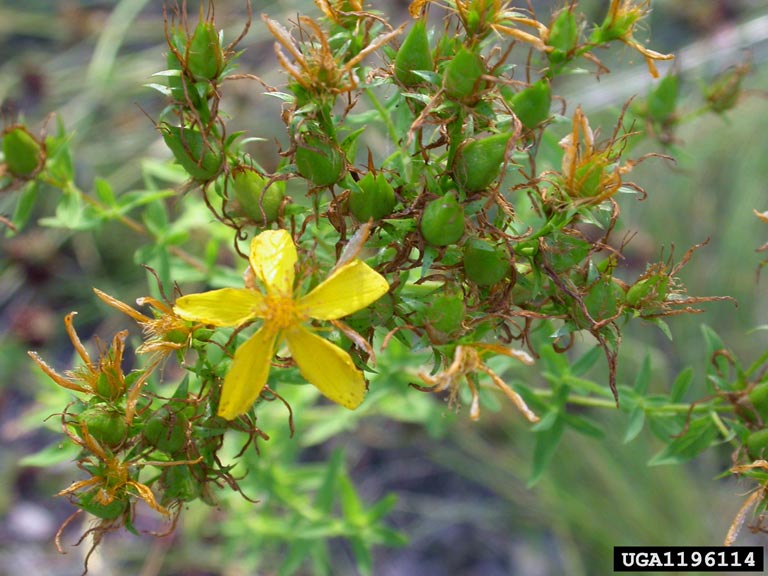St. John's Wort

St. John's Wort
(Hypericum perforatum)
Priority: - Established / Strategic Control
Tags: Terrestrial
Identification and Reproduction
Identification:
- St John’s Wort is an herbaceous perennial that grows upright up to 1.5 metres high.
- It has a woody root crown that produces up to 30 stems, with 25-100 flowers per stem.
- Stems are woody at the base and smooth.
- The plant has narrow, lance-like leaves that are 1-2 inches long, and are opposite in arrangement. When held up to the sun tiny dots will be seen on leaves.
- Flowers are yellow, star-like with black dots on margins.
- Seedpods are bright green, sticky and contain many seeds.
Reproduction:
- Spreads easily by seeds carried by wind, water, humans and even animals.
- Seeds can remain viable for decades.
- Is also capable of spreading laterally through roots.
Habitat & Ecology
This weed spreads over forests, woodlands, rangelands, disturbed and well-drained sites like trails, meadows, and overgrazed ranges. It prefers dry, sandy soils, and full sun sites.
Impacts
Social:
- St. John's wort is poisonous to most livestock: can cause photosentivity that can lead to blindness, weight loss swelling and soreness of the mouth.
- As the plant matures it becomes impalatable forage for livestock.
- Crowds out native forage species in pasturelands.
Management
Mechanical/Manual Control:
- Hand pulling or digging will only be effective for small, young infestation.
Biological Control:
- There are two Chrysolina species that are used as a biocontrol, but they are unable to eradicate infestations entirely.
- Effects from a moth, aphid, gall midge and another beetle are currently being researched.
Chemical Control:
- Currently isoxaben is registered for use on St John's wort.
- May need to do repeat herbicide applications.
Resources
Download the Alberta Invasive Species Council's Factsheet on St John's-wort here.
Check out this video made by the Montana Department of Agriculture to help identify St. John's wort.
Header photo (Isidre blanc).




